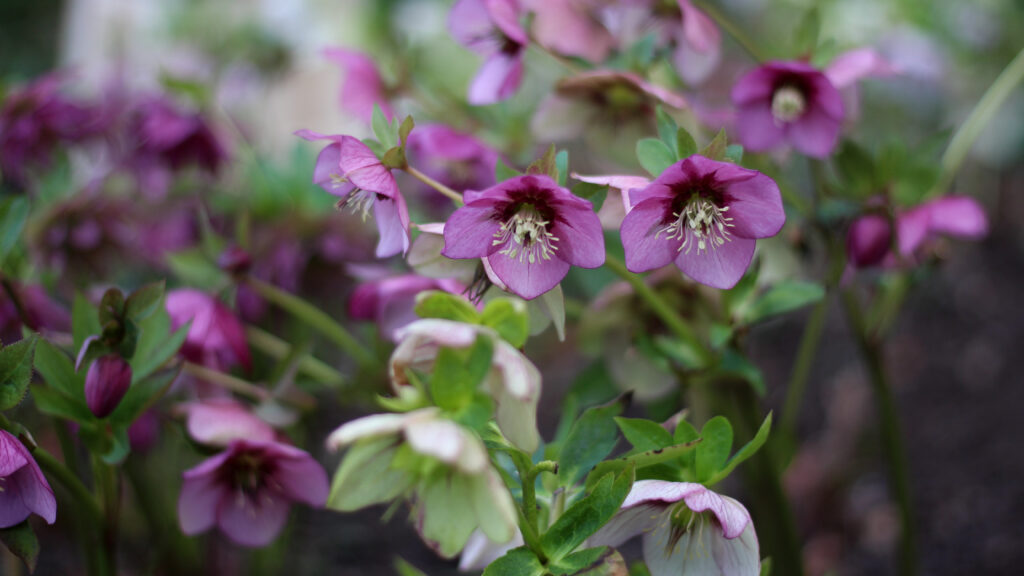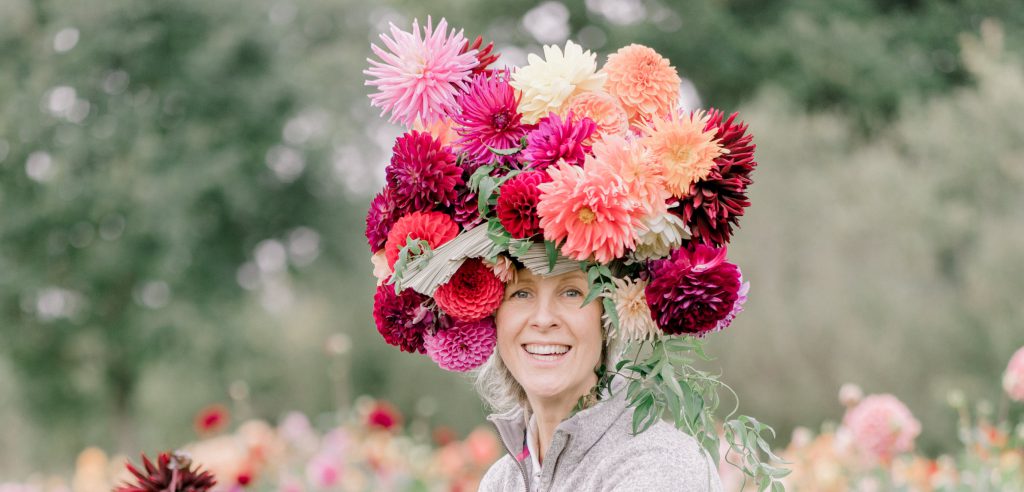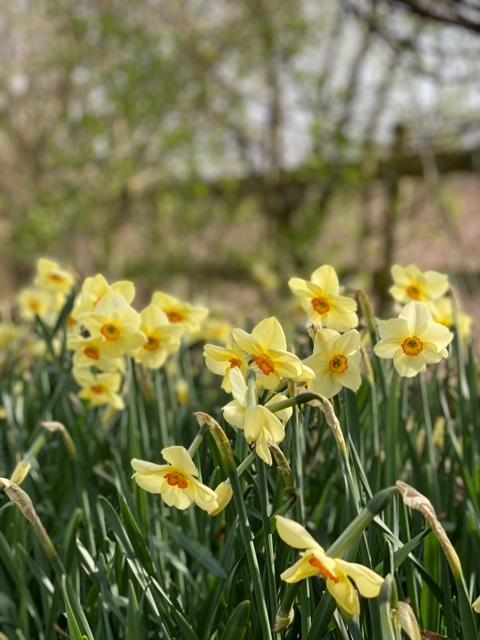We are all familiar with roses. As abstract forms in art and textiles; with their symbolism and associations; with their fleeting loveliness in our British gardens and hedgerows. We’re also familiar with the rather stiff, neat and narrow varieties available for sale as cut flowers in countless garage forecourts, supermarkets and high street florists. These are specially bred for long vase life over every other characteristic (scent, health, beauty of form), and are usually imported from far flung countries, doused in a cocktail of chemicals.
What you are putting your nose into when you hold a bunch of British field- or garden-grown roses is quite a different story. The varieties selected by Flowers from the Farm growers are valued for their scent and beauty above all else, so that although they may last only five days in the vase, our customers still count themselves lucky to get their hands on them. Rather than seeing the same stiff, scentless and ordinary flower on their kitchen table for three weeks or more, they find it much more exciting to have a more brief encounter with a full petalled, decadent, fascinating and richly fragrant garden rose.
Most small scale flower growers prefer to avoid the use of chemicals in their fields and gardens, knowing that a balanced and healthy garden will mostly regulate itself in terms of pests and diseases.
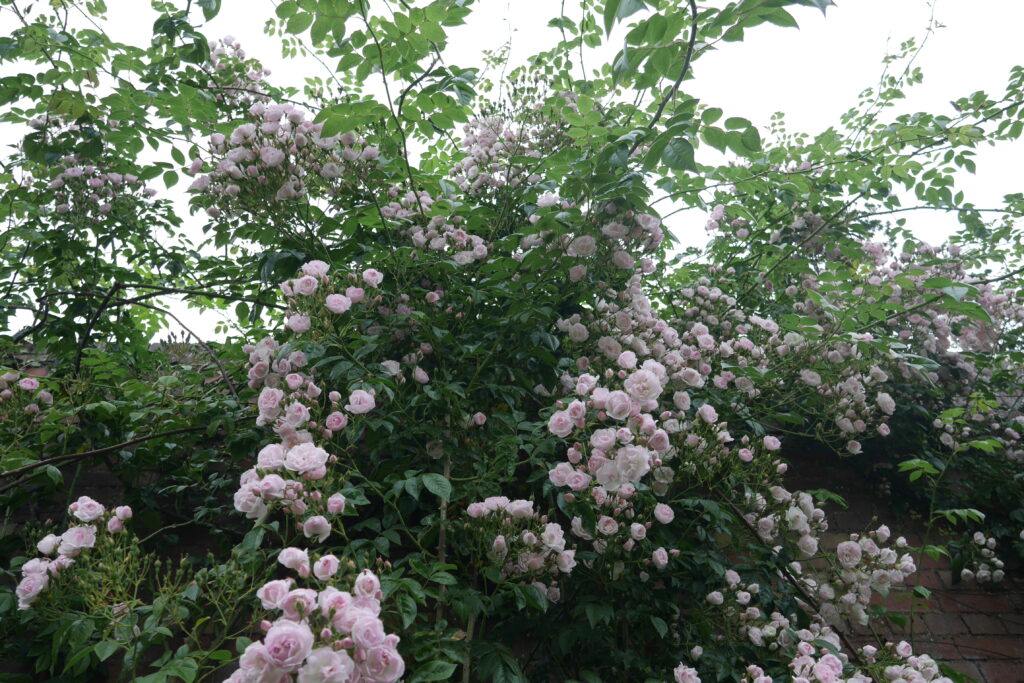
'Ethel' scrambles vigorously.
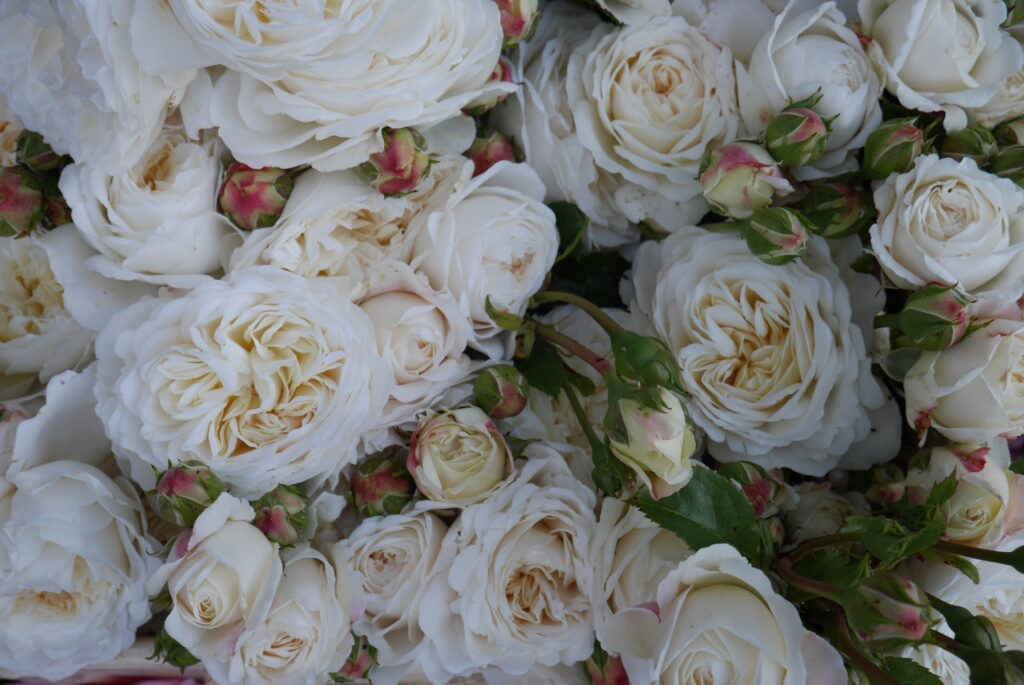
Who could resist 'Tranquility'?
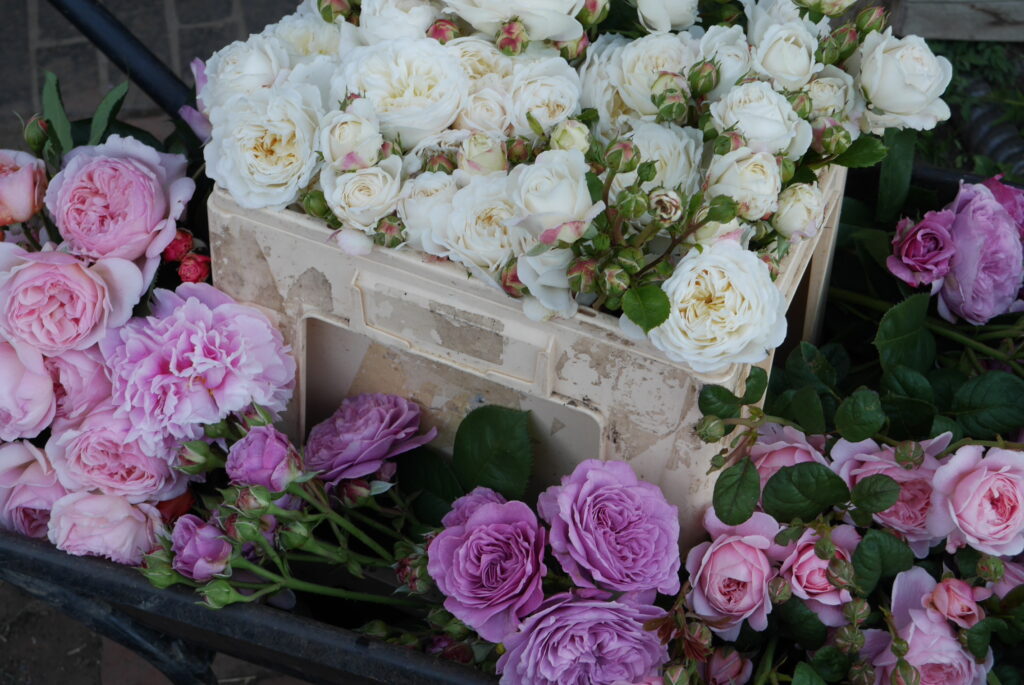
A gorgeously scented selection await delivery at Stokesay Flowers.
At Stokesay Flowers we grow only rose varieties with good disease resistance – except for in the case of one rose, the lovely Variegata di Bologna, which every year fights a losing battle with blackspot, but then we all have our soft spots! Some of our most popular and successful roses are varieties bred by David Austin, the English Roses such as Lichfield Angel, Tea Clipper, Tranquility and Wildeve. These romantic beauties are not only healthy of leaf and ravishing of flower, but they bloom on and off throughout the summer months and into the early autumn, meaning that they are available throughout the British outdoor growing season, from late May to early October. We also grow a large number of once-flowering old shrub roses, those impossibly romantic varieties with long heritages and French names, such as Charles de Mills, Mme Alfred Carriere, and Perle d’Or. Along with the ramblers (such as Ethel) and species roses (such as Rosa Glauca), these varieties usually produce a huge abundance of sumptuous perfumed flowers in June only; they are one of the reasons that June is the most popular month for weddings.
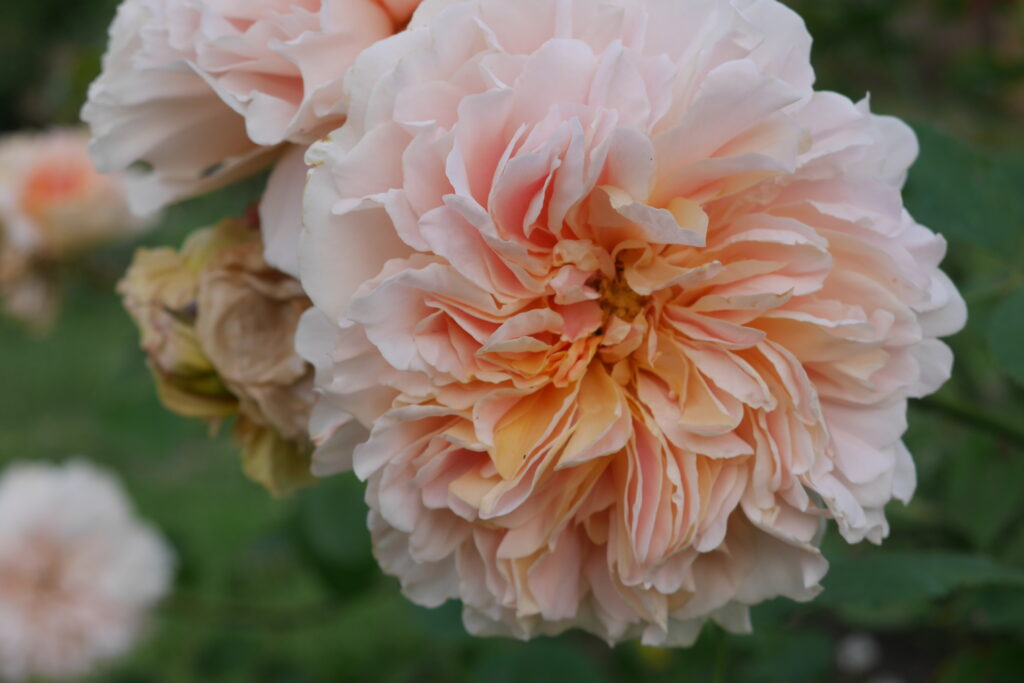
Rose 'Tea Clipper'.
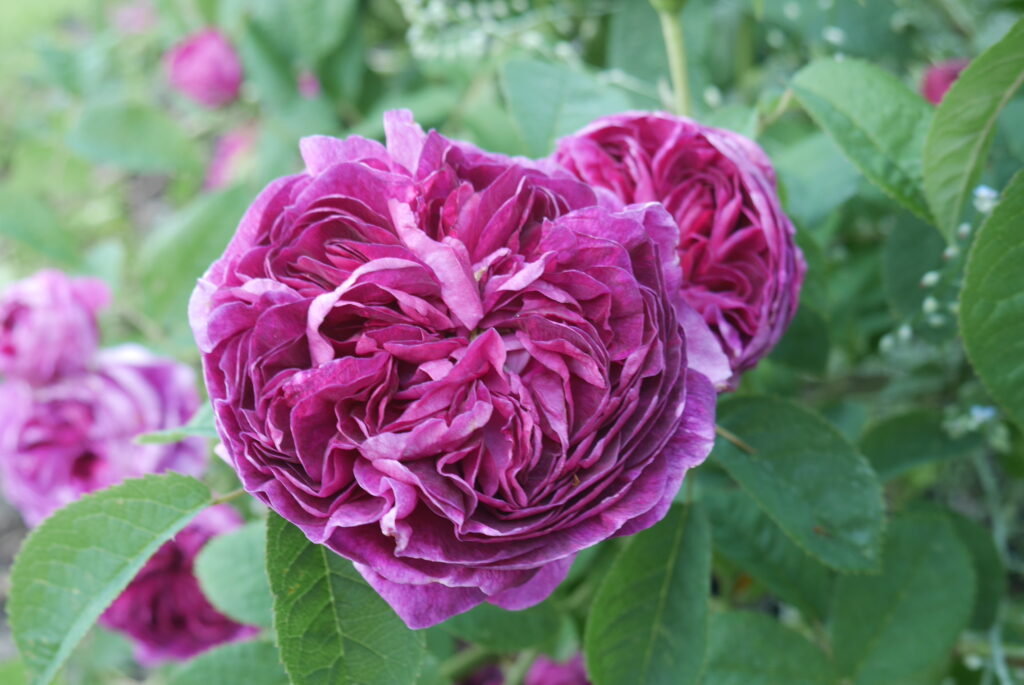
Full petalled, decadent and fascinating. Rose 'Charles de Mills'.
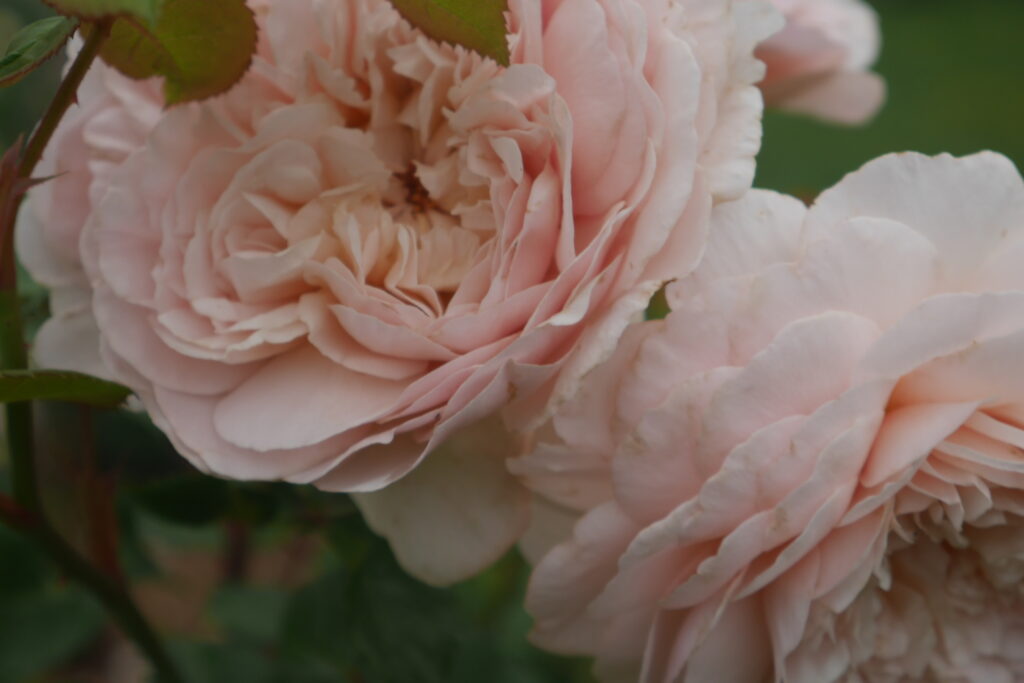
Rose 'Emily Bronte'.
One more note about garden roses. Some people tell us that they have tried picking roses from their own gardens, and the experience has convinced them that garden roses do not work as cut flowers; they seem to collapse almost as soon as cut. It is necessary for us to explain that a professional flower grower is experienced not only ion selecting and growing gorgeous flowers, but also in knowing the correct stage, time and method for picking them to give the best vase life possible. Ideally, roses should be picked first thing in the morning, before the sun is out, and plunged straight into a bucket of cool water. They should then rest in the water in a cool dark place for a couple of hours before being arranged. Your growers will know this, and they will have such interesting and delicious varieties – from amongst the hundreds and hundreds available to cultivation – that you will probably never want to look at an imported rose again.
If you’d like to learn more, we have written a book, ‘Favourite Roses for Cutting’, which is available from our website www.stokesayflowers.com.
